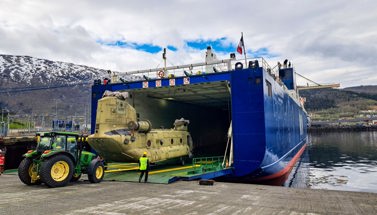
Bracing for the Rebound: Three Tips for Navigating Today's Supply Chain
If there is one thing that is predictable in today’s world, it is the unpredictability of the supply chain. Throughout the past two years, the industry has experienced extreme highs and extreme lows challenging every piece of experience and knowledge we have about logistics – from COVID-related shutdowns, long cue lines for vessels waiting to get into port on the West Coast as well as the East Coast, not to mention equipment capacity challenges and a shortage of labor across the board.
And just as the industry began to see the playing field level out a bit, the perfect storm is brewing: Back-to-School imports, preparations for the 2022 Peak Season and another round of COVID shutdowns in China that is leaving a massive backup of vessels destined for the U.S.
“Shippers today must be vigilant and remain focused on what they can control in an environment that is uncontrollable,” said Trailer Bridge’s Director of NVOCC & Compliance Emma Phillips in a recent interview.
With more than 17 years in logistics, Phillips has seen the industry evolve over the years and offers 3 tips for shippers looking to navigate the challenges on the horizon: plan ahead, communicate well and often, and be open to diversification.
1. Plan for the unexpected.
It may sound counterintuitive to suggest planning is a key area of focus in today’s volatile climate, but Phillips suggests its about anticipating the delays. This can include delays from the sourcing market to point of entry as well as from port to the final mile. “Building time into your supply chain to account for potential delays allows the breathing room necessary to adjust and pivot without causing a major disruption to your business,” said Phillips.

Planning ahead might look like bringing cargo in earlier than needed or considering other routes for your freight. Scott Weiss, Vice President of Business Development at Whiplash, a third-party logistics provider, stated in a recent Journal of Commerce article, “A lot of people got burned last peak season, so retailers are bringing in as much product as they can now.” This approach minimizes the impact on your product sales when unexpected disruptions occur that are out of your control.
2. Communication is key.
In addition to timing of cargo delivery, delays may also result in expired rates according to Phillips. “Most ocean rates given today are good for 30 days, and in this market, a number of customers have seen expired rates due to the shutdowns in China,” Phillips explained. “The key here is communication.”
Teams must work with their partners and suppliers to stay abreast of changes that are happening weekly, daily and even hourly. Being equipped with the most up-to-date knowledge allows you to respond and react accordingly.
Philips recently worked with a customer importing goods from Asia whose supplier experienced a COVID shutdown. Her team at Trailer Bridge International in partnership with the origin team was able to keep the customer updated on what was happening on the ground. “Keeping a daily pulse on the supply chain allowed the customer to know when and where to ramp up or ramp down his operations,” said Phillips.
She adds that collaboration between business partners is key here. “Whether you are working with a NVOCC like Trailer Bridge International or managing your own freight, it is essential to ensure everyone understands the business goals and what needs to happen in order to achieve those goals,” said Phillips. “It’s about providing clarity and visibility so proper decisions can be made to achieve the desired results.”
3. Be open to diversification.
“Diversify has been a common theme since the start of COVID in 2020,” said Phillips. “We continue to see the importance of diversification, especially with the latest round of shutdowns in China.” By having multiple sourcing markets shippers can shift when a shutdown occurs. Consider finding options in Shanghai, Ningbo and Qingdao or even other nearshoring options to allow alternate routes to keep your business on track to meet its goals suggests Phillips.
Diversification goes beyond sourcing markets. She adds shippers may also want to look at other transportation methods to keep their freight on schedule. “If the rail ramp in Memphis is backed up, you may want to consider a different option,” explained Phillips. “This may result in a higher cost on the trucking side of the move but if it allows your freight to keep moving it could be the right choice. This goes back to understanding your business goals and working with your partners to achieve those goals.”
At the end of the day, the perfect storm brewing later this year is not the first challenge the industry has faced, and it certainly will not be the last; it is however, the opportunity to develop strong relationships with logistics partners to keep your business growing and freight moving. Partnering with a team experienced in managing a supply chain in the face of challenges, like Trailer Bridge International, allows shippers big and small the time to focus on growing their business. Connect with Phillips and her team today for a customized look at a plan of action for your supply chain so you can brace for impact and weather the storm.
Photo courtesy of JAXPORT.
Related Articles




